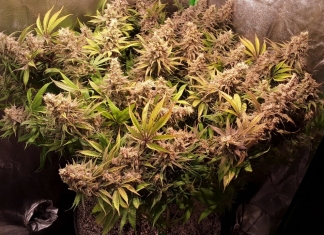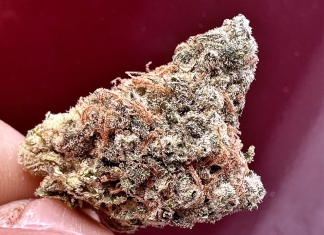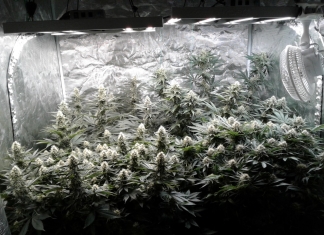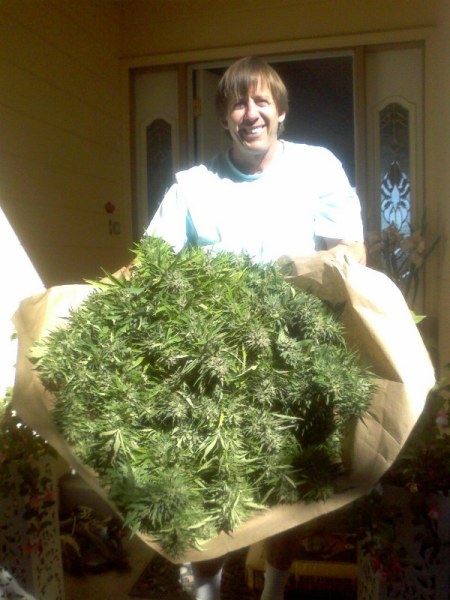Three Peabody city councilors traveled to Maine on Thursday to tour two medical marijuana dispensaries run by Wellness Connection, which is seeking state approval to open a shop in Peabody.
Councilors Jon Turco, Joel Saslaw and Tom Rossignoll wanted to see how a dispensary in Peabody might be run. The City Council gave the local go-ahead for the facility in November.
The nonprofit company has run a dispensary in Portland for the past six years, discreetly located in a brick building near downtown. The entrance, in the back, requires someone from inside to buzz you in. Once inside, patients slide their license and medical ID card, a certification, through a slit in the bottom of a glass window to an employee who verifies the prescription.
“We call this the security vestibule, but the nickname we have given it is “the man trap,” CEO Patricia Rosi told the councilors during their visit. “Once you’re there, unless someone lets you in or lets you out, you cannot leave.”
Inside, the wooden doors open to a room with soft green and orange walls, light hardwood floor and birch tree decals that give a natural vibe. Glass cases display the products available for purchase.
Among them is a pouch that prevents the marijuana from getting dry, eliminates odors and has a lock that requires a numbered passcode. They encourage all patients to lock their medication, and provide pamphlets regarding responsible household use.
Staff members, referred to as member liaisons, answer questions about the products Wellness Connection prepares at its cultivation facility in Auburn, about a 40-minute drive north of their Portland dispensary. If the company opens a dispensary in Peabody, the marijuana would come from a similar cultivation facility in Revere.
“We can help people if they need things explained to them and recommend it to them,” dispensary manager Kyle Dunn said. “A lot of people come in here thoroughly unsure about all this. They’ve never tried it before and are a little on edge. We’re not only here to educate them, but to make them feel comfortable.”
New patients go through an intake, like an orientation, where they learn about the plant, talk about their goals, and are briefed on the law and the company’s code of conduct.
“This is where we inform patients that you have to be mindful of your neighborhood: don’t speed in the parking lot, don’t yell, don’t make noise. Be respectful,” Rosi said. “We view ourselves as a self-regulating community.”
If there were to be some sort of incident, she said, they would sit down with the patient to review the code of conduct a second time. If another incident occurred, that person would be barred from the facility in future.
No loitering is allowed in the parking lot.
“That goes back to the stereotype of our audience. We’re not a head shop and we’re not catering to the 20-year-old partying ‘stoner,'” Rosi said. “It’s not the scene that people expect.”
The company has four dispensaries, serving about 10,000 patients (average age 46) and employing about 85 people.
They do about 1 million transactions per year, with the average purchase under $100. About 11 percent of Wellness Connection sales are paid for through a mobile app called “CanPay,” so not everyone pays in cash. Patients can buy up to 5 ounces a month, and the software system in the facility prevents employees from selling a member anything over that limit.
A security guard is on the premises, along with security cameras throughout the perimeter of the building. Staff are trained to identify suspicious behaviors and have emergency buttons throughout the facility to contact police.
The Peabody facility also would have security technology including vault sensitivity sensors, biometric fingerprint reading and infrared.
The Wellness Connection of Massachusetts and the Wellness Connection of Maine operate as separate businesses, but share business and management consulting services through a mutual partner.
Rosi said the company is committed to dispelling the stigma that comes with selling medical marijuana.
“In everything we do we try to debunk stereotypes or clarify misunderstandings, I think, about what we are and what we stand for,” she said. “We really believe as a company that we can have a positive impact in our communities.”
Cultivation overview
The process of growing marijuana goes through about a five-month cycle at the Wellness Connection complex in Auburn, Maine.
The first step is cloning. The tip of a mature plant, called a “mother plant,” is cut off from a branch.
The clones, which are basically seedlings, are moved to a separate room. They’ll spend about 15 days in a warmer, more humid climate of this room to grow. Once they grow and mature a bit, they are potted and moved to “veg” stage for two weeks.
Plants start out as vegetative growth, promoting the production of leaves and stems. An 18-hour photo period replicates the longer summer days with bright white light for about two weeks. The plants are then potted in shredded coconut shells. The operation does not use soil, because the potential for root rot and other traditional diseases.
As they grow bigger, plants are placed in one of the four flower rooms where the light schedule reduces to 12 hours on, 12 hours off. The lighting spectrum changes to an orange hue, which replicate the sun during the fall, which makes the plant start forming buds for blossoming.
Plants stay in the flower room for about eight weeks, where they are harvested, cloned and pruned on alternating two-week cycles. They are then stacked into a “dry room.”
Harvested buds are dried and then packaged for the dispensaries.
Growers in Auburn cultivate an extra five plants or so to make up for a few that will not grow as well. And some of the extras become mother plants.
Old mother plants are cut down, bagged, soaked in soap – which renders the product unusable – and thrown in the dumpster.
Employees at the cultivation facility are proactive in filling dispensary needs. They work with dispensaries to come up with inventory forecasts for what members will need in the coming five to six months. They must grown a number of plants per strain to fill the need. They offer between 30 and 40 strains at any given time.
A board of PhDs advises the company on various aspects of the cultivation process.
The plants are watered using an automated system, which brings treated water from tanks in the basement. Fans – loud ones – and humidifiers keep the room perfect for growth.
Individual plants are tracked with a tag that is attached during the process, each with a unique barcode that has the harvest number, plant identification number and strain identification.














